These finger exercises will help improve the speed and clarity of your guitar playing. They are designed to be used by electric guitarists who use a pick, but can be adapted for acoustic guitars and fingerstyle players.
Finger Exercises For Guitar
Remember, the key word when practicing is 'discipline'. Stay focused on the task at hand and don't go off on an epic shredding session. Just ten minutes of focused practice will improve your finger dexterity far more than an hour's worth of noodling.
If you can increase your speed by just 5% then your general guitar playing will sound vastly better, and even when you're not playing at top speed, your picking will be much clearer and more confident.
The following exercises are designed to improve your finger dexterity and picking speed. Take them slowly at first, and don't overdo it: stop if you feel any discomfort.
At the end of the article we provide further exercises that you can try.
Scale Exercises
Playing guitar scales is one of the most beneficial guitar finger exercises. The improvements you make will be noticeable in your everyday playing. If you practice scales daily, your speed and clarity will improve noticeably in a relatively short period of time.
The first guitar finger exercises involve playing up and down a simple major scale. The exercises will use an A major scale, but for variety you can use any major scale.
Play the scale exercises using alternate picking.
A good way of adding interest to finger exercises is to play the same exercise either a fifth higher each time, until you get back to where you started. For example, play the exercise below with an A major scale, then with the following major scales: E, B, F#, C#, G#, D#, Bb, F, C, G, D.
First, play the scale normally, placing a slight accent on the root notes.
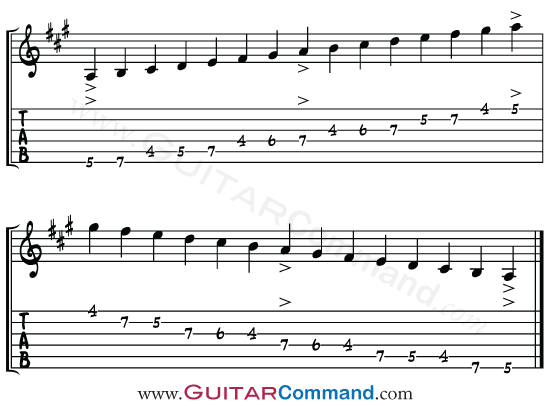
[ad name="Google Adsense Lge Rec"]
Next, play the scale in triplets, with a slight accent on the first note of each triplet.
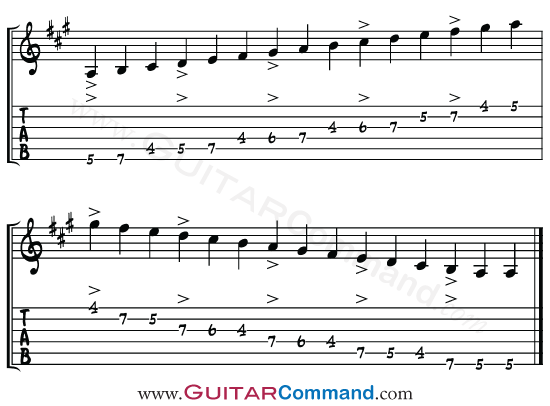
Now, play the scale in groups of four notes, placing a slight accent on the first of each four notes.

Play With A Metronome
It is a good idea to us a metronome when playing these exercises. Make sure that you can play the exercises at a comfortable speed before increasing the tempo. Many players are so focused on playing fast that they struggle to keep their playing in time in slower tempos.
[ad name="Google Adsense Lge Rec"]
3 Up, 1 Down Scale Exercise
Now we're going to alter the note order of the major scale. The following exercises are based on a C major scale, but can be played with any major, minor or modal scale.
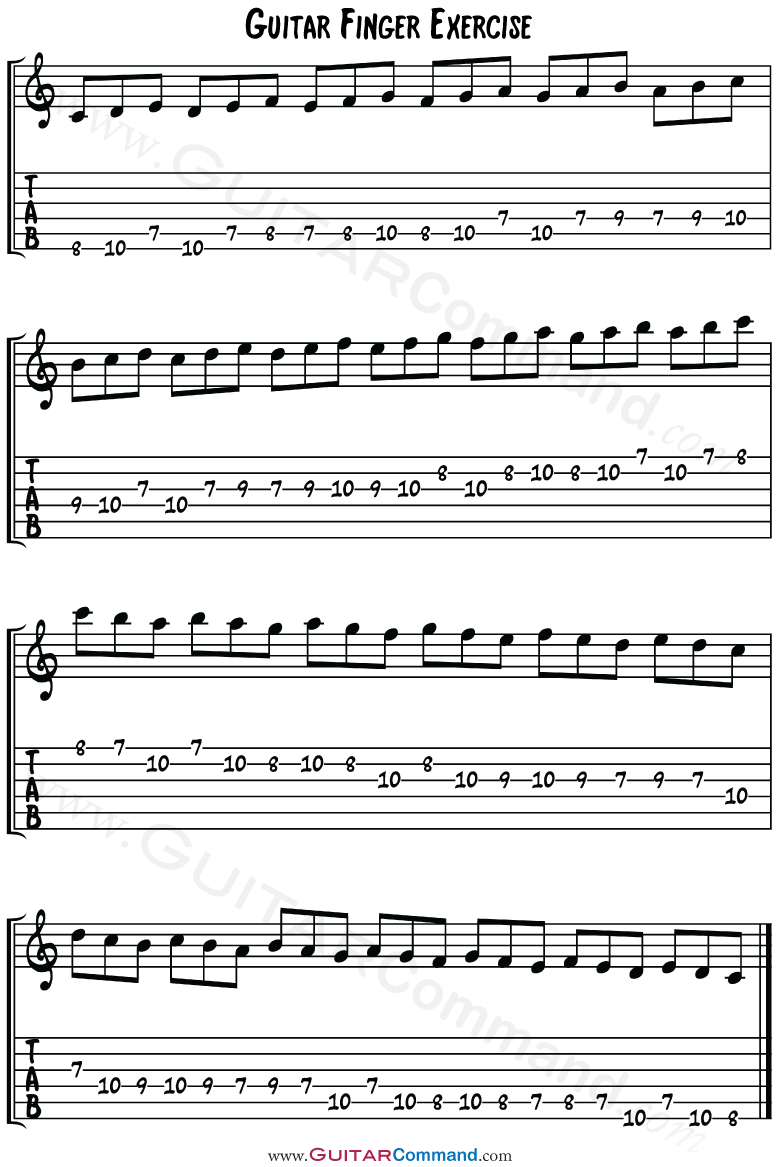
4 Up, 3 Down Scale Exercise
The following exercise is another variation on the same major scale shape.

Chromatic Scales
One of the very best ways for guitarists to exercise their fingers is to play chromatic scales. Chromatic exercises get all of the fingers working, and are commonly used by professional guitarists as part of a pre-gig warm up routine.
The first exercise is a standard up and down scale. The second exercise gives your fingers a bit more of a stretch as you swap strings.
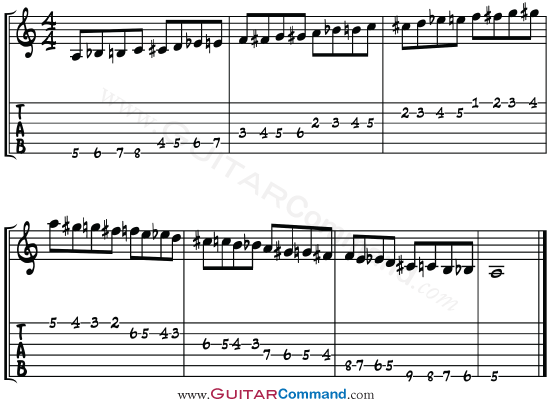
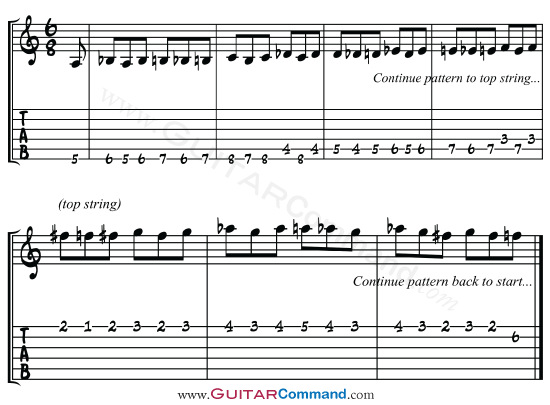
Hammer-On And Pull-Off Exercises
The following exercises are good for building up finger strength.
Play the first exercise as written, then try it on other strings using different root notes. The tempo can become quite fast once you are used to the scale.
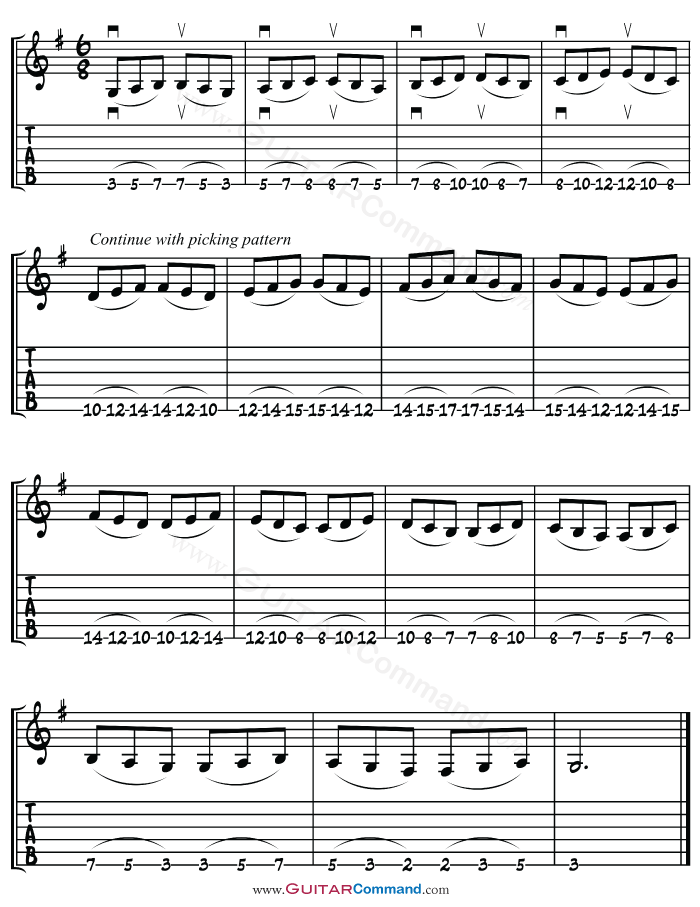
Play the following exercise as shown, then play it on different strings and at different fretboard positions.
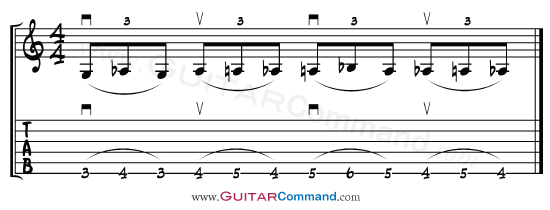
Conclusion
We hope that you have enjoyed playing these exercises. Using these or similar exercises really can help your playing. You can find more playing exercises here: alternate picking exercises and here: sweep picking. When you have mastered all of our guitar finger exercises, try to come up with your own!
Join our newsletter list for free guitar news and information. Click here for details.

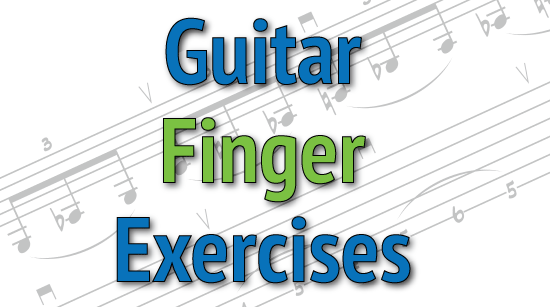

i know i will use this
and thank you
I love web site’s like this one mainly because there is always something to learn. Thank you for the in-site and I hope that you continue posting information that’s as educational as this, thanks again my friend.
Hi Thomas,
No problem, we’re glad you’re finding the site useful! There’s lots more to come, so keep checking back for new content (we’ll have a mailing list up and running shortly).
Best of luck with your playing,
The Guitar Command Team